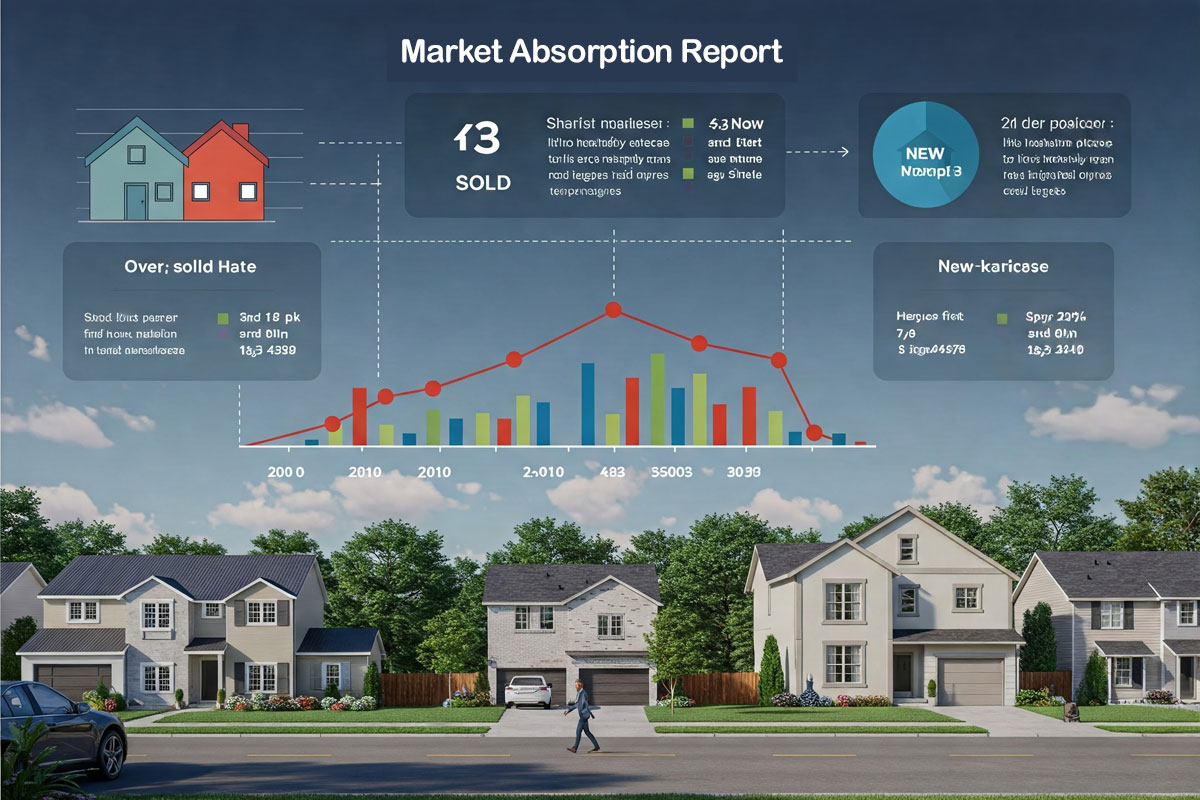 One of the best ways of determining the state of the real estate market is by looking at the Absorption Rate. This tells us the rate at which the real estate market absorbs the housing inventory and helps us determine if we are in a buyer’s market or a seller’s market. New home listings come onto the market all the time, and homes go under contract all the time. The Absorption Rate measures how fast the homes coming onto the market are being sold or absorbed, give us a snapshot of how the market is performing.
One of the best ways of determining the state of the real estate market is by looking at the Absorption Rate. This tells us the rate at which the real estate market absorbs the housing inventory and helps us determine if we are in a buyer’s market or a seller’s market. New home listings come onto the market all the time, and homes go under contract all the time. The Absorption Rate measures how fast the homes coming onto the market are being sold or absorbed, give us a snapshot of how the market is performing.
While some people like to use the Average Days on Market to determine the current market conditions it does have some drawbacks. The DOM calculation only actually uses data from homes that are sold, it does not include those homes that were expired and withdrawn from the market. There is also an old Realtor’s trick where a home is withdrawn from the market and then relisted, thus resetting the DOM counter. Unlike DOM the absorption report takes into account all home listings, not just those that sold.
So now that we know what the Absorption Rate is, let’s take a look at how we calculate it. In order to perform the calculation, we need to know how many homes sold over a given period, how many homes are currently under contract and how many homes are currently listed. Just to complicate things there are actually 3 different formula’s you can use depending upon how you want to treat the under contract homes numbers.
Absorption Rate Formula 1
Rate = Total Active / (Total Sales / Number of Months)
Absorption Rate Formula 2
Rare = Total Active / ((Total Sales + Total Under Contract ) / Number of Months )
Absorption Rate Formula 3
Rare = (Total Active + Total Under Contract) / ( Total Sales / Number of Months)
Let’s use a 12 month period, where we have 12,000 homes sold, 2,000 active listings and 1,500 under contract homes.
Formula 1: 2000 / (12,000 / 12) = 2
Formula 2: 2000 / ((12,000 + 1,500) / 12) = 1.77
Formula 3: (2000 + 1500) / (12000 / 12) = 3.5
The results are given as the number of months it would take to absorb the current total inventory given the current sales rate. A lower number indicates a seller’s real estate market (homes selling faster), and a higher number a buyer’s market. You can see that using the different formula produces completely different results. Formula two at 1.77 months, assumes that all under contract homes are going to close without falling through (a bit optimistic). Formula three at 3.5 months, assumes that no under contract homes are going to close (a bit pessimistic). Formula one at 2 months just ignores the under contract total and so comes in somewhere in between the other two.
To get more accurate and granular data for your specific requirement you can refine by price range, area, home type etc. For example, you could look at single family homes between $200,000 and $300,000 in the city of South Jordan. You can also run the report over different time periods, for example using 3 months, 6 months or a year’s worth of data.
To sum up the Absorption Rate tells us given the current level of home listings how long will it take to sell them all, which in turn tells us what kind of market we are in, a seller’s market or a buyers market.